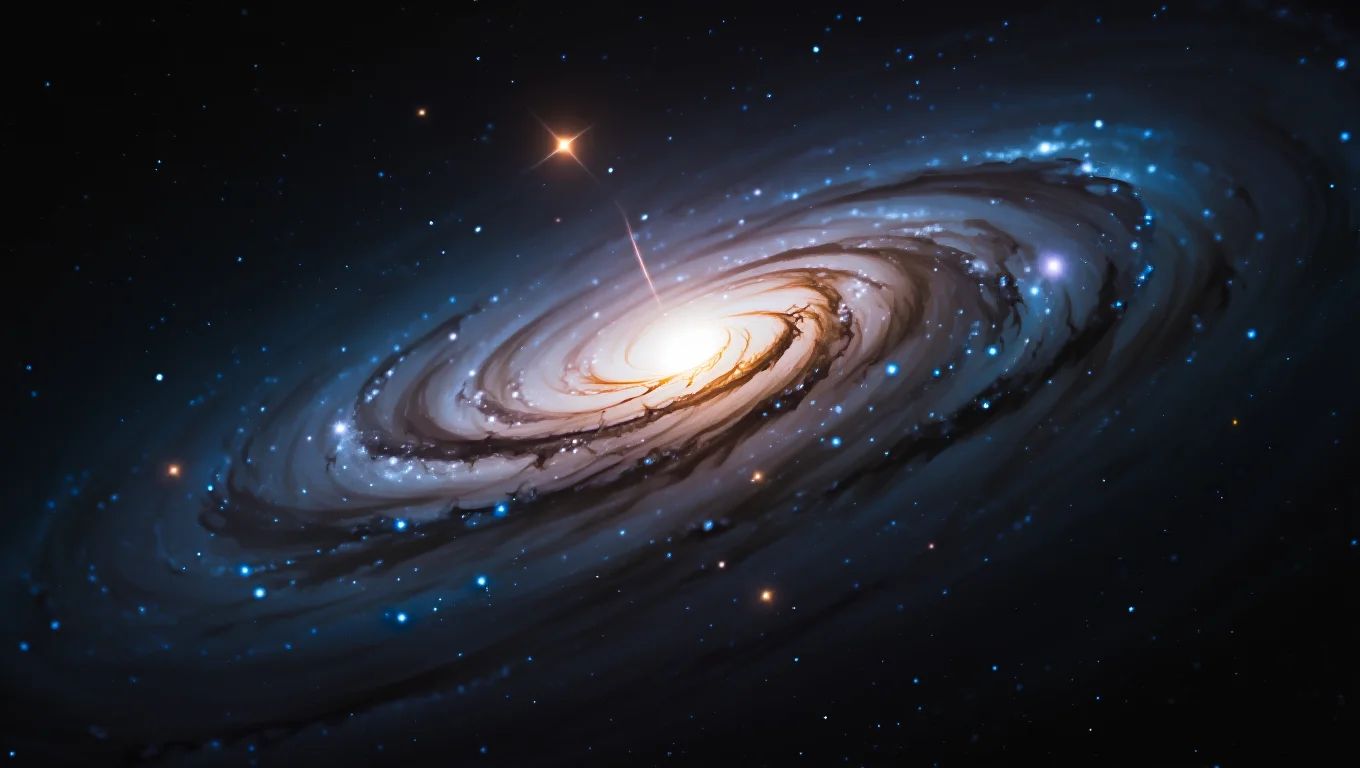Could black holes protect life in the universe? 🌱
Follow us on Google News (click on ☆)
Active galactic nuclei (AGN), these supermassive black holes in a phase of intense activity, emit powerful ultraviolet radiation. Contrary to expectations, this radiation could promote ozone formation in oxygen-rich atmospheres. This mechanism would provide protection against harmful cosmic rays, creating a more welcoming environment for life.

Computer simulations have been used to study the impact of AGN radiation on Earth-like planets. The results show that the protective effect depends on the distance from the source and the atmospheric composition. An oxygen-rich atmosphere reacts by forming a thicker ozone layer, thereby strengthening protection against UV rays.
Earth's history offers an interesting parallel. About two billion years ago, the first oxygen-producing organisms initiated a similar process. Solar radiation then contributed to ozone formation, allowing life to diversify. This positive feedback mechanism could be universal.
What would happen if Earth were closer to an AGN? The simulations reveal that in an oxygen-poor atmosphere, the radiation would be destructive. However, with oxygen levels similar to today's, an ozone layer would form quickly, protecting surface life.
Researchers used the PALEO software to model chemical reactions in exoplanet atmospheres. This tool, originally designed to study the effects of solar radiation, proved suitable for analyzing AGN impacts. The results open new perspectives on galactic habitability.
The discovery of a positive feedback loop in oxygen-rich atmospheres was a surprise. It suggests that once life is established, it could benefit from increased protection against cosmic radiation. This interaction between life and its environment could be widespread.
How does radiation from active galactic nuclei influence planetary atmospheres?
Ultraviolet radiation from active galactic nuclei interacts with oxygen molecules in the atmosphere. This interaction causes the dissociation of oxygen molecules into individual atoms, which can then recombine to form ozone (O3).
Ozone acts as a shield, absorbing some of the harmful UV radiation before it reaches the planet's surface. This process is similar to that observed in Earth's atmosphere, where the ozone layer protects us from the Sun's UV rays.
The effectiveness of this mechanism strongly depends on the initial oxygen concentration in the atmosphere. The richer the atmosphere is in oxygen, the faster and more significant ozone formation becomes, offering better protection against harmful radiation.
What is an active galactic nucleus (AGN)?
An active galactic nucleus is a compact region at the center of a galaxy, extremely luminous due to matter accretion by a supermassive black hole. This process releases a considerable amount of energy in the form of electromagnetic radiation.
AGNs are among the most energetic objects in the universe. Their radiation can influence galactic surroundings over considerable distances. Traditionally, they were considered hostile to life due to their intense radiation.
However, this study shows that under certain conditions, AGN radiation can have a protective effect. This expands our understanding of potentially habitable environments in the universe, beyond regions traditionally considered favorable for life.